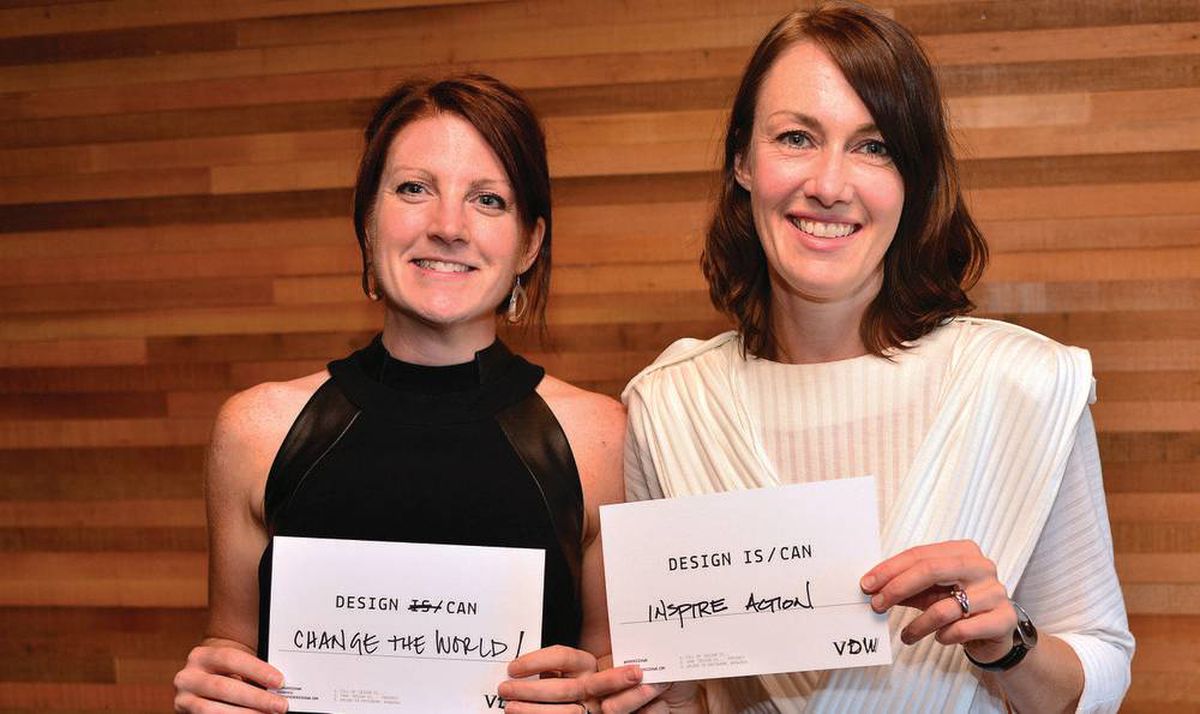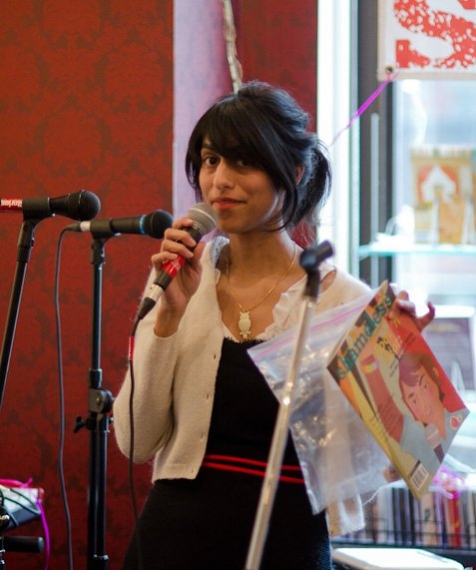Bodies // Impact

THE SITE MAGAZINE X VANCOUVER DESIGN WEEK
To launch Volume 38: Feminisms and this year’s Vancouver Design Week, The Site Magazine’s Michael Taylor discusses “Impact” (the theme of VDW 2018) and its overlap with the themes explored in this issue. Three designers, Jennifer Cutbill, Andrea McLean, and Jane Cox, who are active in the leadership of Vancouver Design Week, share their experiences and ideas pertaining to “Bodies”, “Work”, and “Stories”, the three sections of Volume 38: Feminisms.
To read the issue, and the full breadth of content under each section, please visit our buy page where you can find a stockist or order a copy online. To see the VDW 2018 agenda and read more about the theme “Impact,” visit Vancouver Design Week’s website. VDW 2018 will be held from May 7–13, 2018.
BODIES // IMPACT
Discussing collective, administrative, and professional bodies with Jennifer Cutbill.
Jennifer is the Founding Director of Vancouver Design Week, Regional Director of the RAIC, and licensed Architect under the AIBC.
“Bodies need to be frameworks that fulfil their intention by letting the individual tap in and benefit from a collective; they need to let people see themselves as part of a larger whole.”
Michael Taylor: I have this vivid memory of being in my first year of architecture school and, as a newbie, volunteer at the thesis exhibition, being assigned to help you set up your thesis project. You arrived at the venue, the stables project by Gair Williamson Architects, with your rammed-earth models in a van cab, the back bumper scraping the pavement along Cordova under their weight. You graduated with one of the most elaborate projects I have ever seen and you continue to take on so much in your career. Why the involvement? What does it mean to you?
Jennifer Cutbill: I haven’t thought about thesis in years! Looking back, I see how formative that project was—even though it failed in what it had set out to do—because it reinforced that our agency as designers is often limited by external forces and that to empower our capacity to solve complex problems and effectuate more meaningful change, we need to operate beyond the boundaries of individual projects, individual sites, and individual bodies.
I love the praxis of architecture and I believe it is a powerful medium for creating impact. However, I think what’s holding us back as a society, more than a lack of ideas or resources, is a lack of critical connections; without these we are unable to harness the collaborative integration and collective will necessary to tackle the wicked problems we are facing. Connections need to be established across disciplines and sectors, between policies and values, amongst institutions and communities, and most importantly, with the future we want. For me, this is the higher order design challenge to tackle; it’s one that demands capacities beyond architecture and frameworks beyond those provided by our existing bodies. So, I’ve set about to create new ones that are better suited.
MT: Why do you think bodies are the answer to the lack of connections today?
JC: I think the value of “bodies”—whether initiatives, organizations, communities, or institutions—is that we can use them to can tap into our larger collective agency. I was moderating a panel for Women In Architecture (WIA) last week on the topic of community building. An inspiring panel of women participated and all of them were leading their own practices while championing a not-for-profit. These side of desk projects allowed them to access funding and connections in order to serve causes, communities, and curiosities beyond what their ‘day job’ allowed. While everyone agreed the work was meaningful, each admitted that the time spent nurturing the bodies necessary to access the work was cannibalizing the resources to do the intended work.
As collective bodies, we can be stronger together, but only if we can share the load. This got me thinking about how we could evolve our fledgling body, the Vancouver Design Foundation (the not-for-profit created to produce VDW), to better support our local design community. What if we could alleviate the need for practitioners to create and sustain NGOs by sharing ours, providing access to grants and resources so that everyone can start from 25 or 50 instead of zero.
“It is easy to be smug when you are from Canada, because we have it pretty good. But if we don’t continue to advocate for the rights of families we could easily slip into an American model.”
MT: Let’s talk more about the professional bodies that as Architects and Designers we are forced to interact with, for better or worse. I don’t mean to sensationalize or appropriate tragedy for our agenda, but I want to bring up the criminal case of Ceira Lynn McGrath that went to trial last month. In our discussion with Andrea, she reminded us that, even though feminist debate is moving forward, the struggles that working moms face remain a huge barrier to equality. The McGrath’s twins were on the waitlist for several day-homes in Calgary before they had to find another option. When an 18-month-old dies under an unlicensed caregiver, we are reminded that professional parity will never be achieved without basic rights for all families, including access to safe and affordable child-care. Do you think that a professional body, like the RAIC, should play an active role in advocating for accessibility to the profession by fighting for these basics?
JC: The McGrath’s story is heart-breaking. Our daughter just turned two, so I see these challenges as both a cause for systemic concern but also as an everyday hurdle. Looking back now, I realize I used to be part of the problem. I used to question commitment when colleagues left the office before 5 p.m. But now that I have to leave every day to make a strict 4:30 p.m. daycare pick up, I realize what an asshole I was. The first step is normalizing equitable leave from and equitable re-entry to the workforce for both parents. This is something all our professional advocacy bodies can and should confront by supporting progressive employment policy but also, more importantly, helping to shift the culture.
The AIBC has devoted resources to a gender and diversity committee, which completed research that affirmed locally, trends recorded across North America, that women make up a larger number of the student body and a larger percentage of top performers through their education, they equal men during internship, but after this, numbers of registered Architects decline rapidly, and fall off a precipice at the leadership level. I’ve had three colleagues in the past 18 months move to other cities seeking more affordable day-care, one of whom moved home to Quebec where child care is more accessible and affordable and parental leave more equitable and less stigmatized. Apparently, Quebec has the highest percentage of women at all rungs of the architectural practice ladder and I hear it has one of the healthiest collaborative design cultures. I don’t think this is a coincidence.
“Women need to keep working towards what they believe in from all sides, as mothers, professionals, and volunteers. We don’t need to ask for permission.”
MT: I want to try and connect the collective bodies we are discussing with bodies as they occupy space literally, which is the interest of the first section in Volume 38: Feminisms. When we design spaces for bodies, public restrooms for example, we know that equal area and stall count do not mean equal access. The biology of the body needs to be considered and we need to design for each gender differently. Do you think similar best practices could be applied to design a profession with equal access?
JC: I think men and women both require diversity, equity, and understanding. We need more diverse perspectives at all tables and we need to spend more time around those tables actively listening. The discussion with Andrea, reminded me how valuable it is to see women up the ladder as you start your career. Studies show that girls outperform boys in school until around grade five or six across the board—in math, science, physical education. But then there is a nosedive in middle school—not due to any lack of capacity, but rather a lack of confidence. Stanford psychologist Carole Dweck (author of Mindshift) attributes this to our societal tendency to raise young women to be perfect while boys are raised to be brave. She explains this bias can cause a “growth mindset” in boys and a “fixed mindset” in girls, which hinders risk-taking, adaptive capacity, and resilience. This isn’t a problem inherent in gender. A few years ago, I saw Tamara Vrooman, CEO of Vancity Savings and Credit Union, speak and she relayed a story about her then five-year-old son. When she asked what he wanted to be when he grew up, he turned to her and asked: “Mom, can boys be CEO’s too?” Equality does not mean equal, this is as true in bathrooms as it is in our profession. We need collective bodies to not just celebrate women, but allow them opportunities to shine on a daily basis, so that, like Tamara's son, we can all see women in leadership as a baseline.
MT: Participating in groups like WIA and Vancouver Design Week, you obviously believe that participation and advocacy can drive progress. But there is a line of inquiry in recent feminist rhetoric that suggests that feminism’s progress has less to do with early trailblazers than it has to do with the evolution of capitalism. For example, in “Communization and the Abolition of Gender” Maya Andrea Gonzales outlines that: “By the 1970s […] the world was overpopulated with respect to the demand for labour. Women were no longer needed in their role as women [which is] why, in our period, the straightjacket of the heterosexual matrix has had its buckles slightly loosened." How do you stay positive in your advocacy, when so often the forces at be, capitalism in this case, are not bending to it, but rather appropriating it?
JC: It’s hard to imagine our current capitalist framework being capable of advancing anything other than profit, the market economy is not inherently concerned with social and ecological health and as a tool of the reigning power, capitalism is rarely interested in equity. The same hand that proffers accessible birth control and gay friendly condos will, on the other side of the globe, exploit women and girls as cheap and disposable labour.
MT: It’s a good point, in our current issue Jennifer Davis’ article “Between Women” outlines how capitalism supports the exploitation of domestic labourers by women at the individual level. So, would you argue that any benevolence is a coincidence at best?
Your use of ‘exploitation’ reminds me of a quote by Wendell Berry. He said “the standard of the exploiter is efficiency; the standard of the nurturer is care." If there has been a brief alignment between feminist and capitalist agenda: great. But this does not change the fact that a lot of the work has been done by activists in their individual bodies and advocates in collective bodies, who have fought for what they believe in to make an impact on the powers that be.
Michael Taylor is the Commercial Director of The Site Magazine. He and Jennifer met while completing their Masters in Architecture at the University of British Columbia. In 2015, Michael struggled to keep pace with a pregnant Jennifer as they biked 300km from Seattle to Portland on the STP Ride.






